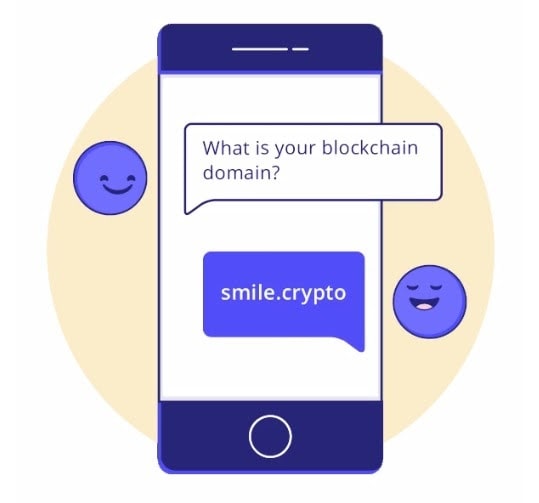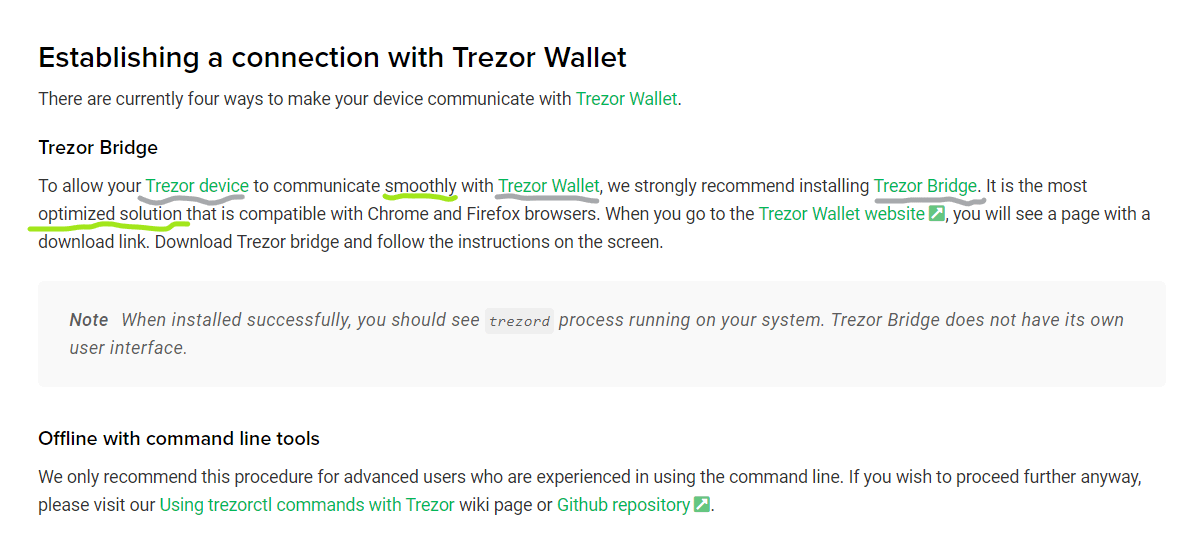Unstoppable Domains and Blockchain.com – Partnering to solve Crypto’s UX problem
A new partnership between Blockchain.com and Unstoppable Domains is going to lead to the creation of branded domain names. NFTs and the digital identity space are evolving.
On June 10th, Unstoppable domains, a leading Web3 digital identity platform, and Blockchain.com, one of the world’s largest blockchain wallet issuers, announced the launch of .blockchain NFT domains. In the coming weeks, all Blockchain.com wallet users will be able to secure a free .blockchain domain to use for their Blockchain.com wallet.
This is a blockbuster partnership. It connects Unstoppable Domains, a platform with 2.4 million registered usernames with Blockchain.com, a wallet provider with 83 million users.
The .blockchain extension
Unstoppable domains is an issuer of secure NFT domain names that give users full ownership and control over a communicable alpha digital identity.
The Unstoppable Domains extensions mitigate some of the stress involved in completing blockchain transactions by replacing lengthy alpha-numeric wallet addresses with easier-to-use username-like extensions. For example, a wallet that previously read as 0xAb5801a7D398351b8bE11C439e05C5B3259aeC9B can now be viewed and interacted with as Vitalik.blockchain within the web3 ecosystem.
Unstoppable Domain’s extension domains can be used as user-owned, secured, portable web3 identifiers that can be used to log into and transact with more than 200 apps, wallets, exchanges, marketplaces, and the metaverse.
“With a .blockchain domain, our users can not only send and receive crypto as easily as they send email, but own their identity in Web3,” said Lane Kasselman, Chief Business Officer at Blockchain.com. “Our partnership with Unstoppable Domains marks the first custom top level domain (TLD) and gives us a unique way to share the .blockchain name with the millions of users of the Blockchain.com Wallet.”
Since the new .blockchain domain names are purchasable through Unstoppable Domains, existing users can customize their domains and own more than one. Other Unstoppable Domains identifiers include x, .nft, .wallet, .coin, .bitcoin, .dao, and .888. Users can access and customize these identifiers within Blockchain.com’s platform and interface.
Unstoppable domain NFTs are minted on the Polygon blockchain, a high-speed blockchain that allows for minimal minting and renewal fees.
Source: Unstoppable Domains
Unstoppable Domains makes the crypto payment user experience more akin to using a personal wallet app like PayPal, Venmo, or the Cash App.
On the Cash App users use Cashtags like $jongfisher to identify and transact with others on the network.
Access to Web3
“By offering free blockchain domains to their users, Blockchain.com is helping unlock the potential of Web3 for millions of people across the world,” said Sandy Carter, SVP of Business Development at Unstoppable Domains. “We’re thrilled to partner with the world’s most trusted wallet to make Web3 and simple crypto payments more accessible to all.”
Web3, in this context, refers to decentralized apps (dApps) that run on the blockchain. Applications on Web3 appear similar to the internet we are used to using, with several key differences. The important distinctions are that Web3 dapps do not monetize personal data and users don’t need to use an email address or social media account to sign up and use them.
The Unstoppable Domain’s mission of making web3 simpler and accessible is one that will resonate most with the ecosystem’s incumbent users.
Crypto has a UX problem
Poor UX has long been a significant hurdle that has held back crypto adoption. In Crypto’s early years, spending hours going through the bitcoin.org resources section, and poking around in the dark testing buggy, open-source apps was a necessary inconvenience. For the majority, however, the complicated security setup involved in managing crypto independently is too much of a bridge to cross.
When a user searches “how to secure my cryptocurrency”, the most common piece of advice received is to store assets in an offline hardware wallet. A hardware wallet is a physical device that stores the users’ blockchain keys offline. This means they are not ‘live’ and cannot be compromised by hackers. This may sound simple enough but things start to get messy when a user wants to access the crypto or move it around.
Trezor is one of the top two manufacturers of crypto hardware wallets along with Ledger. Unfortunately, Ledger recently suffered a data breach that exposed sensitive private information about thousands of customers.
The user setup guides for Trezor’s two current hardware wallets, the Trezor One and the Trezor Model T show that there are many steps to complete to use one of these wallets. The reason for this is that nothing comes pre-installed on a Trezor wallet, all the software associated needs to be downloaded manually across multiple steps.
Source: Trezor
A Trezor hardware wallet needs to be set up to communicate with ‘Trezor wallet’, a web interface for communicating with the hardware wallet to manage assets and initiate transfers.
The setup article begins by stating that there are four ways for your device to communicate with an application called ‘Trezor Wallet’. Some users may be confused already given that the device itself is referred to as a wallet and it needs to connect with ‘Trezor Wallet’ which is an interface and not another wallet.
The article mentions two ways to connect with a Trezor Wallet, either via a ‘Trezor Bridge’ or ‘Offline with command line tools’. Trezor Bridge, the easy option, involves downloading another piece of software called Trezor Bridge, ‘the most optimized solution’ from the Trezor website.
After establishing a connection with Trezor Wallet, there are more steps that need to be completed before the wallet can be used. These involve going to the Trezor website, downloading the latest firmware, creating a new wallet by interacting with the interface on the hardware device, creating a backup of a recovery seed phrase, naming the device, and setting up a seed phrase.
There are real risks associated with using crypto websites in crypto. The Trezor website asks users to bookmark the setup page because of potential phishing attacks. “By creating a bookmark, you will be able to avoid unnecessary googling and distractions that aim to get you to a fraudulent site,” says Trezor. Warnings like this are disconcerting for uninitiated users who are used to the smoother payment experiences in the traditional finance system.
Hardware wallets may be the best wallets to safely store your crypto. They cannot however directly connect with web3 and Dapps. It is possible, however, to connect your Trezor to a third party wallet and connect with Dapps this way to more safely store assets and conduct transactions. Major hardware wallets Trezor and Ledger are not compatible with the Trust Wallet but can connect with another major Web3 browser wallet, Metamask.
This is one feature that Trust Wallet will need to add to successfully compete with Metamask, the leading web3 wallet in the space. Additionally, the fact that Trezor and Ledger can connect with some web3 wallets and not others is another indication of the confusing and frustrating UX experience in crypto.
Crypto’s UX is improving
Initiatives such as the Unstoppable Domains Blockchain.com partnership are important because it adds a layer of familiarity and intuitiveness to the crypto retail user experience. This has long been a conundrum for crypto product builders — do we build products that users already know how to use or do we refuse to make concessions and wait for users to learn the skills required to navigate the crypto ecosystem? How do we make blockchain operations less daunting and more approachable, while still maintaining security and pseudonymity?
Magic, formerly known as Fortmatic, is an easy-to-use alternative to web3 wallets like Metamask. Users, through Magic, can simply use a phone number or email address to connect to web3-based applications, without needing a browser extension.
With most web3 wallets, a specific web browser and browser extension need to be used to access dApps like Metamask. Magic authenticates users by linking to a phone number or email address, as long as a user has access to either one of these two identities they can log into a dApp using Magic on any device.
When users access a dApp like Curve Finance, they initially click on the “Connect Wallet” button. If a user clicks on the Magic/Fortmatic option they are prompted to provide a phone number or email address. They are then sent a verification code. If it is correct, then they can set up a password which they can then use to log into their crypto wallet when they log into dApps like Curve or Uniswap.
On June 8th, Payments giant PayPal announced that users would now be able to transfer cryptocurrency from their accounts to other wallets and exchanges. Previously, the crypto functionality was completely internal, meaning that users would have to exit positions and enter USD before crystalizing profits or losses.
Paypal says they have added the feature because of user demand. This feature was the most demanded from our users since we began offering the purchase of crypto on our platform,” said Jose Fernandez da Ponte, SVP and general manager of blockchain, crypto, and digital currencies at PayPal.
Paypal initially gave users the ability to buy, sell and hold crypto in October 2020. It upgraded its crypto capabilities with the launch of Checkout with Crypto, a feature that allowed consumers to pay millions of businesses using cryptocurrency.
Defi and NFTs are no longer just for crypto innovators and Web3 natives. Mainstream tech and finance is exploring how the space works and mainstream adoption is inevitable. Better UX, more straightforward payment systems, and less painful account management are all things that the Dapp industry needs to work on to accommodate this incoming wave of users. Partnerships like Unstoppable Domains-Trust Wallet are the beginning of this process.

Don’t miss out – Find out more today






